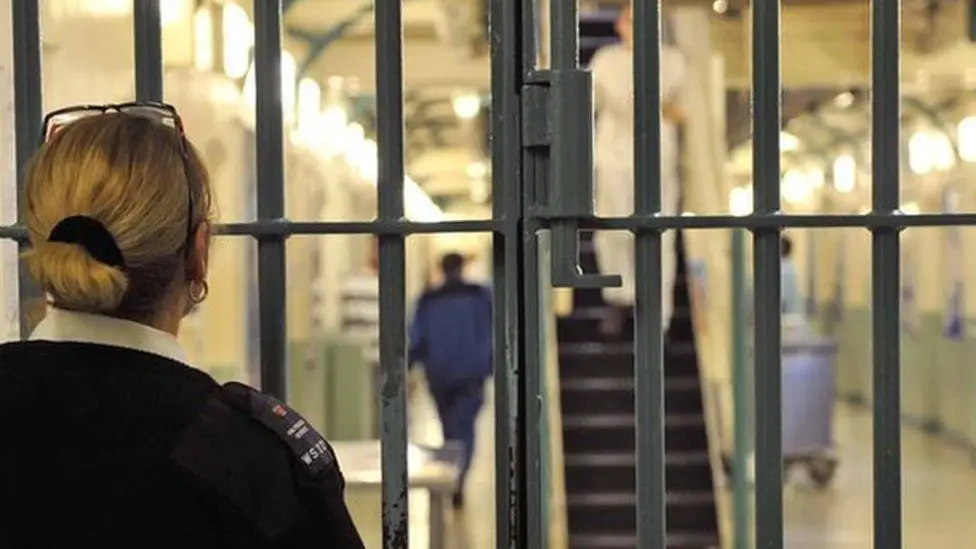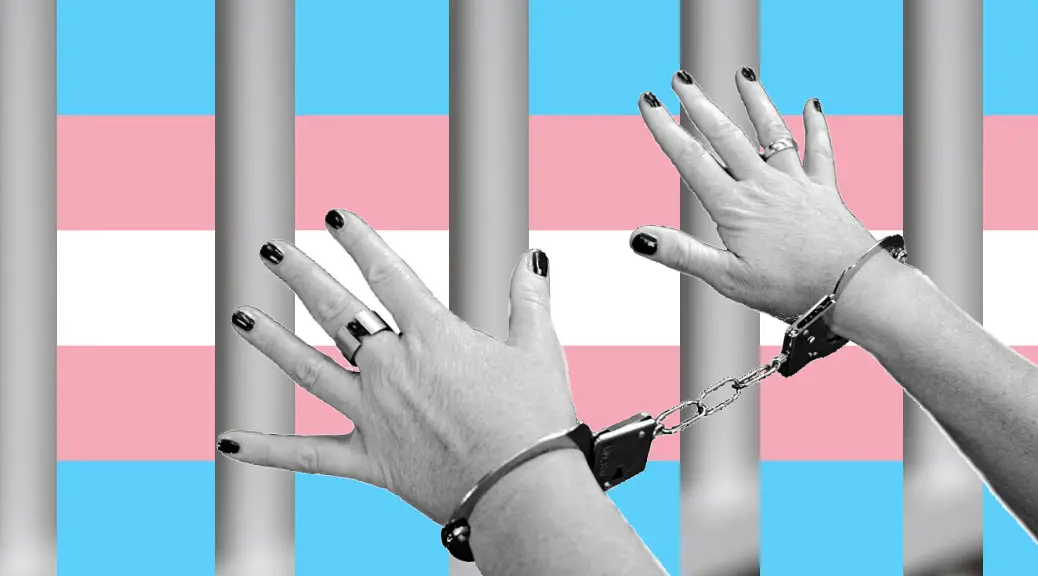The placement of transgender prisoners in the UK is a topic of interest, and understanding the policies and procedures involved is crucial. New measures are being implemented to ensure that transgender women with male genitalia or those who have committed sex or violent crimes are not housed in mainstream women’s prisons. The decision on where to house transgender prisoners is made on a case-by-case basis, taking into consideration individual risk assessments.
In Scotland, a notable case involved a transgender woman convicted of rape who was initially held in a women’s prison but was later moved to a men’s prison after a risk assessment. This case, along with the deaths of two trans women in male jails, has prompted the Ministry of Justice in the UK to review the rules governing the treatment and placement of transgender prisoners.
It is important to understand the recent developments in transgender prison policies in the UK. The aim is to ensure appropriate accommodation and treatment for transgender prisoners while facing challenges within the existing prison system. This review aims to address concerns and calls for increased support systems and specialized facilities to ensure the safety and well-being of transgender individuals within the prison system.

Overall, ongoing improvements in policies, support systems, and accommodation are needed to ensure the fair and safe treatment of transgender prisoners in the UK. By exploring where transgender prisoners go in the UK and understanding the policies involved, we can contribute to a more inclusive and compassionate correctional system.
The Decision-Making Process for Transgender Prisoners in the UK
The placement of transgender prisoners in the UK is determined through a careful decision-making process that considers various factors, including gender identity, safety, and medical requirements. Each case is assessed individually to ensure that appropriate accommodations are made to protect the rights and well-being of transgender prisoners.
One of the key considerations in this decision-making process is gender identity. Transgender individuals are housed in facilities that align with their gender identity, rather than their assigned sex at birth. This approach recognizes the importance of affirming and respecting an individual’s self-identified gender, which is vital for their mental health and overall well-being.
Safety is another crucial factor taken into account. The prison authorities conduct thorough risk assessments to evaluate the safety needs of transgender prisoners. These assessments consider various aspects, including the potential risks associated with housing transgender prisoners with cisgender individuals, as well as the specific vulnerabilities transgender individuals may face within the prison environment.
Medical requirements are also considered during the decision-making process. Transgender prisoners may have specific healthcare needs related to hormone therapy, surgical procedures, or mental health support. It is crucial for the prison system to provide appropriate medical care and support to ensure the overall health and well-being of transgender prisoners.
| Factors Considered in the Decision-Making Process for Transgender Prisoners |
|---|
| Gender identity |
| Safety concerns |
| Medical requirements |
It is important to note that the decision-making process for transgender prisoners in the UK is an ongoing area of development. The Ministry of Justice has recognized the need for a review of the rules governing the treatment and placement of transgender prisoners, particularly in light of recent incidents involving the deaths of trans women in male jails. This review aims to further improve policies and ensure the fair and safe treatment of transgender individuals within the prison system.
Conclusion
The decision-making process for placing transgender prisoners in the UK takes into account various factors, including gender identity, safety, and medical requirements. This ensures that transgender prisoners are housed in facilities that align with their gender identity and receive the necessary support and accommodations. However, there is an ongoing need for review and improvement to ensure the safety and well-being of transgender prisoners within the prison system.
Recent Developments in Transgender Prison Policies in the UK
The UK is making significant strides in improving the treatment and accommodation of transgender prisoners within its prison system. Recognizing the unique needs and challenges faced by transgender individuals, the government has recently implemented new measures to ensure their safety and well-being. These developments aim to address the concerns raised by advocates and activists for transgender rights.
One of the key changes being implemented is the consideration of individual risk assessments when determining the placement of transgender prisoners. This means that decisions regarding housing are made on a case-by-case basis, taking into account various factors such as gender identity, medical needs, and safety concerns. By adopting a more personalized approach, the UK is working towards providing appropriate accommodation and support for transgender individuals within the prison system.
In a specific case study from Scotland, a transgender woman convicted of rape was initially housed in a women’s prison but later moved to a men’s prison after a risk assessment. This case highlights the importance of conducting thorough assessments to ensure the safety of both the transgender prisoner and other inmates. It also underscores the challenges faced in balancing the rights and needs of transgender prisoners within the existing system.

The recent deaths of two transgender women in male jails have prompted the Ministry of Justice in the UK to announce a review of the rules governing the treatment and placement of transgender prisoners. This review aims to address any gaps or shortcomings in the current policies and procedures, with the ultimate goal of ensuring the safety and well-being of transgender individuals in correctional facilities. By acknowledging the need for change and committing to a review, the UK is taking an important step towards improving the prison system for transgender individuals.
| Recent Developments | Impact |
|---|---|
| New measures for transgender prisoners | Improved safety and accommodation |
| Case-by-case risk assessments | Personalized placement decisions |
| Review of rules | Ensuring safety and well-being |
Case Study: Transgender Prisoner Placement in Scotland
In Scotland, a case involving the placement of a transgender prisoner has highlighted the complexities and challenges in determining appropriate housing for transgender individuals within the prison system. The case involved a trans woman who was convicted of rape and initially placed in a women’s prison. However, after a thorough risk assessment, it was decided that she would be moved to a men’s prison. This decision was made based on factors such as her gender identity, medical needs, and safety concerns.
The case sparked a heated debate surrounding the treatment of transgender prisoners in the UK. Advocates for transgender rights argue that individuals should be housed according to their gender identity, while others emphasize the importance of considering factors such as potential safety risks. The Ministry of Justice in the UK has since announced a review of the rules governing the treatment and placement of transgender prisoners, in response to concerns raised by transgender rights organizations.
The placement of transgender prisoners raises complex issues that require careful consideration. Ensuring the safety and well-being of all prisoners while also respecting their gender identity is a delicate balancing act. It is crucial that policies and procedures are in place to conduct thorough risk assessments and provide appropriate accommodation and healthcare for transgender prisoners.
| Factors Considered in Transgender Prisoner Placement |
|---|
| Gender identity |
| Medical needs |
| Safety concerns |
The Call for Review: Ensuring the Safety of Transgender Prisoners in the UK
The deaths of two transgender women in male jails have led to a demand for a comprehensive review of the treatment and placement of transgender prisoners in the UK. The Ministry of Justice has announced that it will be conducting a review of the rules governing the treatment and placement of transgender prisoners to ensure their safety and well-being within the prison system.
Transgender individuals face unique challenges and vulnerabilities while incarcerated, and it is essential that the prison system provides appropriate support and accommodations. Currently, transgender prisoners in the UK are housed based on individual risk assessments, taking into account factors such as gender identity, medical needs, and safety concerns.
However, recent developments have highlighted the need for improvements in transgender prison policies and support systems. New measures are being implemented to prevent transgender women with male genitalia or those convicted of sex or violent crimes from being held in mainstream women’s prisons. These changes aim to strike a balance between the safety and well-being of transgender prisoners and the concerns of other inmates.

In Scotland, a case study involving a trans woman convicted of rape showcased the complexities of transgender prisoner placement. The individual was initially held in a women’s prison but was subsequently moved to a men’s prison following a risk assessment. This highlights the challenges faced in determining the most appropriate housing for transgender prisoners and the need for clear guidelines and procedures.
| Key Points |
|---|
| Transgender prisoners in the UK undergo individual risk assessments for placement. |
| New measures are being implemented to prevent certain transgender prisoners from being held in mainstream women’s prisons. |
| The case study in Scotland exemplifies the complexities of transgender prisoner placement. |
| The Ministry of Justice is conducting a review to ensure the safety and well-being of transgender prisoners. |
The review announced by the Ministry of Justice is a step toward addressing the concerns surrounding the treatment and placement of transgender prisoners in the UK. It is crucial that the review takes into account the experiences and perspectives of transgender individuals and advocates for their rights and welfare.
In conclusion, the deaths of transgender women in male jails have sparked a call for a comprehensive review of the treatment and placement of transgender prisoners in the UK. The aim is to ensure the safety, well-being, and fair treatment of transgender individuals within the prison system. Through improved policies, support systems, and accommodations, it is hoped that the UK prison system will become a more inclusive and just environment for transgender prisoners.
Concluding Thoughts on Transgender Prisoners in the UK
As the discussion surrounding transgender prisoners in the UK continues, it is evident that significant efforts are being made to improve policies and ensure the appropriate placement and treatment of transgender individuals within correctional facilities. The recent measures implemented in the UK aim to address the complexities of housing transgender prisoners, taking into consideration factors such as gender identity, medical needs, and safety concerns.
One case study that highlights the challenges faced in this area is the placement of a transgender prisoner in Scotland. This individual was initially housed in a women’s prison but was later moved to a men’s prison after a risk assessment. This case underscores the importance of conducting thorough and individualized risk assessments to determine the most suitable placement for transgender prisoners.
The Ministry of Justice in the UK has responded to growing concerns by announcing a review of the rules governing the treatment and placement of transgender prisoners. This review comes in the wake of the tragic deaths of two trans women in male jails, highlighting the urgency to ensure the safety and well-being of transgender prisoners.
It is crucial that this review leads to meaningful changes in the prison system, including increased support systems and specialized facilities, to foster a more inclusive and safe environment for transgender individuals. By continuously improving transgender prison policies in the UK, we can uphold the rights and dignity of transgender prisoners while providing a fair and just correctional system.